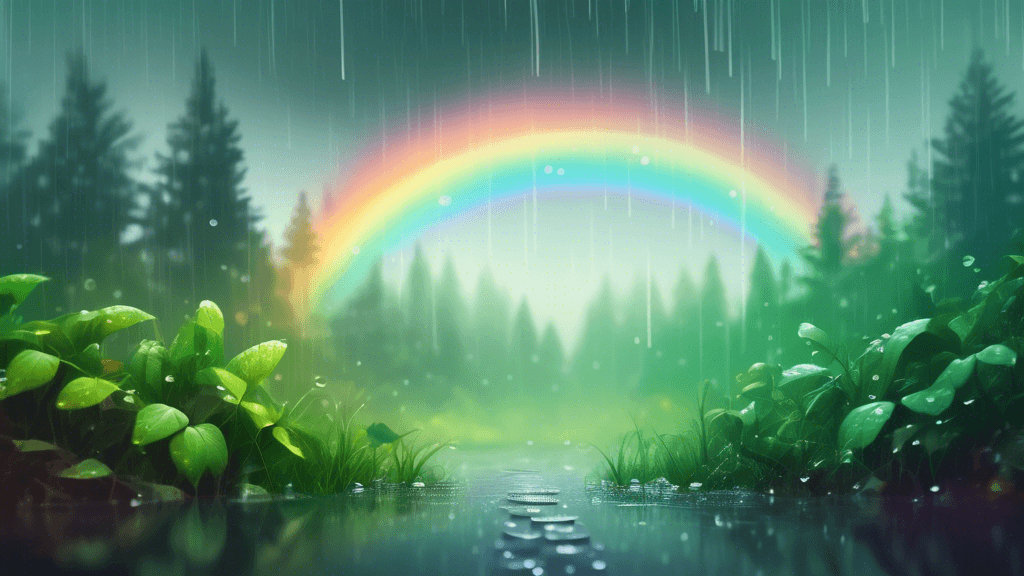
Capturing Beauty: Landscape Photography in the Rain
Share
The Unique Allure of Rainy Landscape Photography
Landscape photography often evokes images of sun-kissed mountains or vivid sunsets. However, there's a lesser-trodden path that can yield equally breathtaking results: capturing landscapes in the rain. For those willing to brave the elements, the rewards can be substantial. But what makes rainy landscape photography so special, and how can photographers ensure they capture the moody beauty of a wet landscape effectively?
Why Shoot Landscapes in the Rain?
Rain transforms the landscape, creating scenes that buzz with fresh vibrancy and mystery. When it rains, colors become more saturated, air becomes clearer and free from dust, and every surface gleams with reflections. This natural enhancement can result in photographs with depth and an emotional quality that fair weather often lacks.
The Benefits:
- Saturated Colors: Rain brings out richer, deeper colors in nature. Greens become more vibrant, and the earth darkens to rich tones that add intensity to photographs.
- Enhanced Reflections: Water on surfaces can reflect skies, trees, and buildings, offering photographers additional layers and dimensions to work with.
- Dynamic Skies: Stormy skies provide a dramatic backdrop to landscapes, adding texture and movement that sunny days cannot match.
- Fewer Crowds: Less likely to encounter other photographers or visitors, which means having the scene all to yourself.
Notably, photographer Michael Kenna once remarked, Bad weather makes for good photography. This sentiment captures the essence of why many professional photographers look forward to overcast skies and stormy forecasts.
Challenges and Overcoming Them
Shooting in the rain isn't without its challenges, both in terms of technique and equipment:
Protecting Your Gear
Maintaining the integrity of your camera and lenses is paramount. Utilizing protective gear such as rain covers, waterproof bags, and lens hoods can shield your equipment from the elements. It's also advisable to carry silica gel sachets to absorb any condensation that may form inside your camera bag.
Setting Your Camera
Rainy conditions often result in low light scenarios. To address this, photographers might need to adjust their ISO settings, widen their apertures, or slow down their shutter speeds. An important tip is to use a tripod to avoid shake, especially in windy conditions which often accompany rainstorms.
Focusing Techniques
Auto-focus can struggle in the rain, especially with droplets on the lens. Manual focus becomes an invaluable skill under these circumstances, allowing for precision and avoiding focus on the wrong elements, like raindrops on a camera lens.
Compositional Considerations
Composition is crucial in any form of photography, but it plays an even greater role when the landscape is cloaked in rain. Here are a few aspects to keep in mind:
Capturing Reflections
Rain puddles, lakes, and even wet leaves can serve as mirrors to the sky and trees. Angling your shots to capture these reflections can add a fascinating dimension to your photographs.
Emphasizing Color Contrasts
The subdued lighting of an overcast sky can help amplify the vivid colors in nature, such as the red and orange hues of autumn leaves against a somber background.
Incorporating the Sky
Don’t shy away from including the stormy sky. It can act as a commanding element in your composition, giving a sense of drama and impending motion to your images.
Conclusion
Rain should not be a deterrent but rather an opportunity for photographers. Those willing to step out during a downpour are rewarded with a fresh palette for their art. With the right preparation and mindset, rain can provide unique photographic opportunities, turning an ordinary landscape into a canvas of extraordinary beauty.
Remember, capturing landscapes in the rain might require more effort and patience, but as any dedicated photographer knows, the most compelling images often come from challenging conditions. Are you ready to embrace the rain and capture the dynamic beauty of the landscape? Grab your gear, protect it well, and venture into the wet world outside—your next masterpiece might just be a rainfall away.





